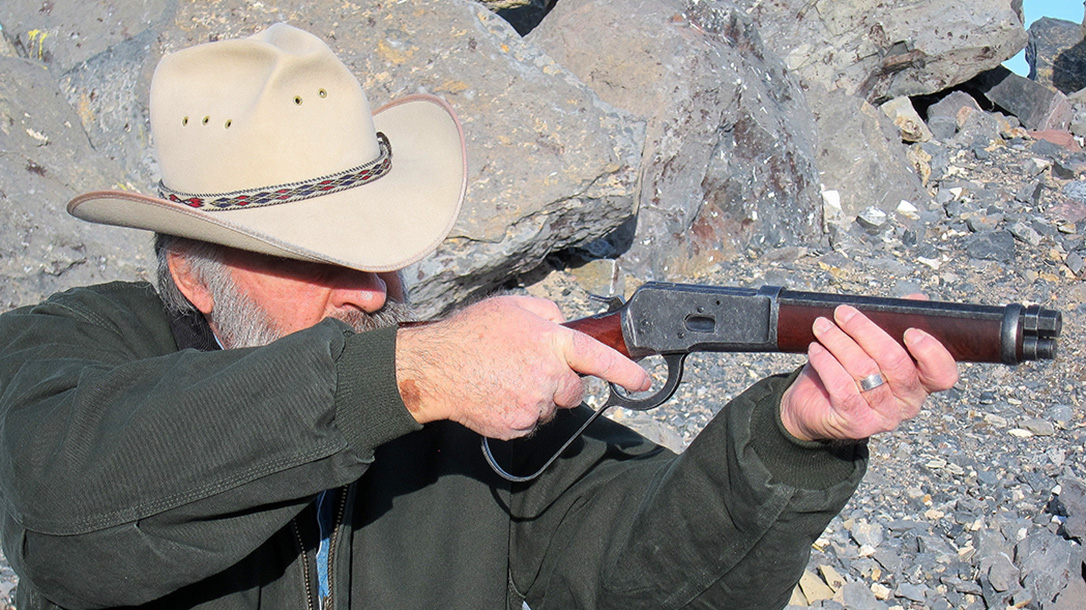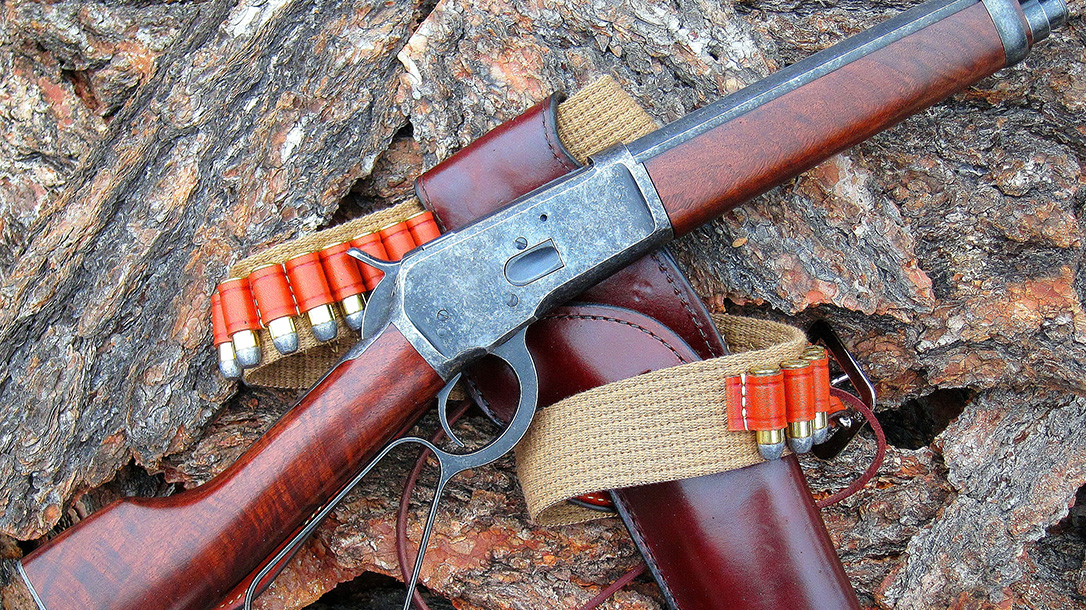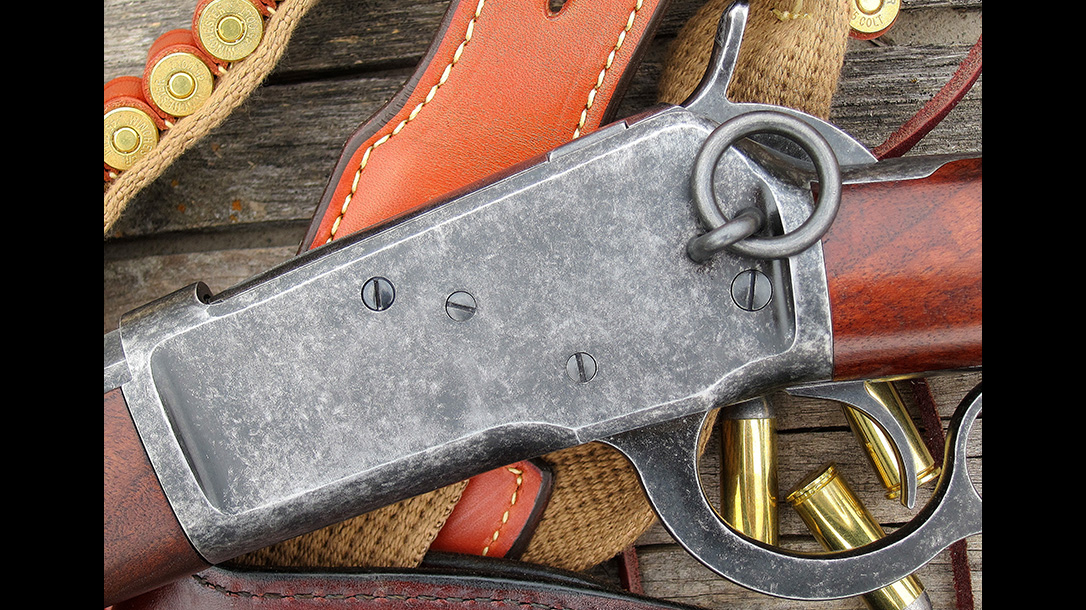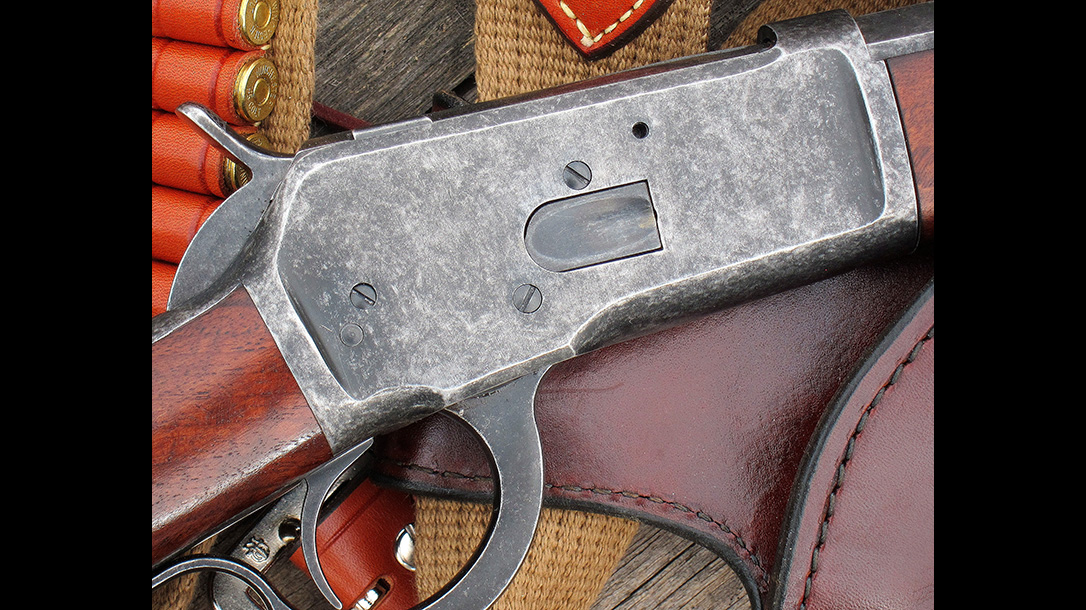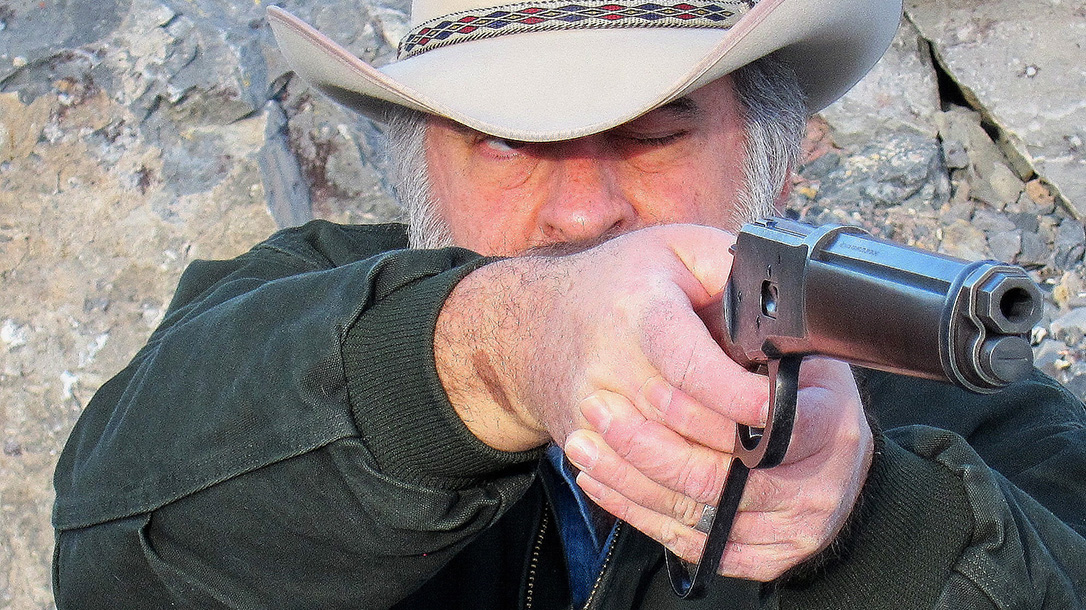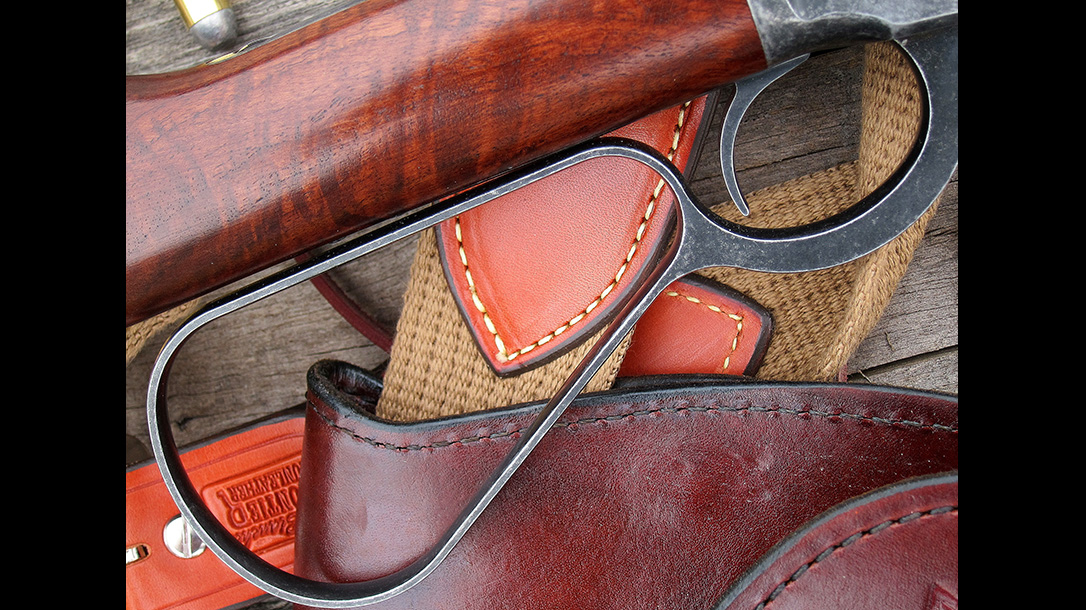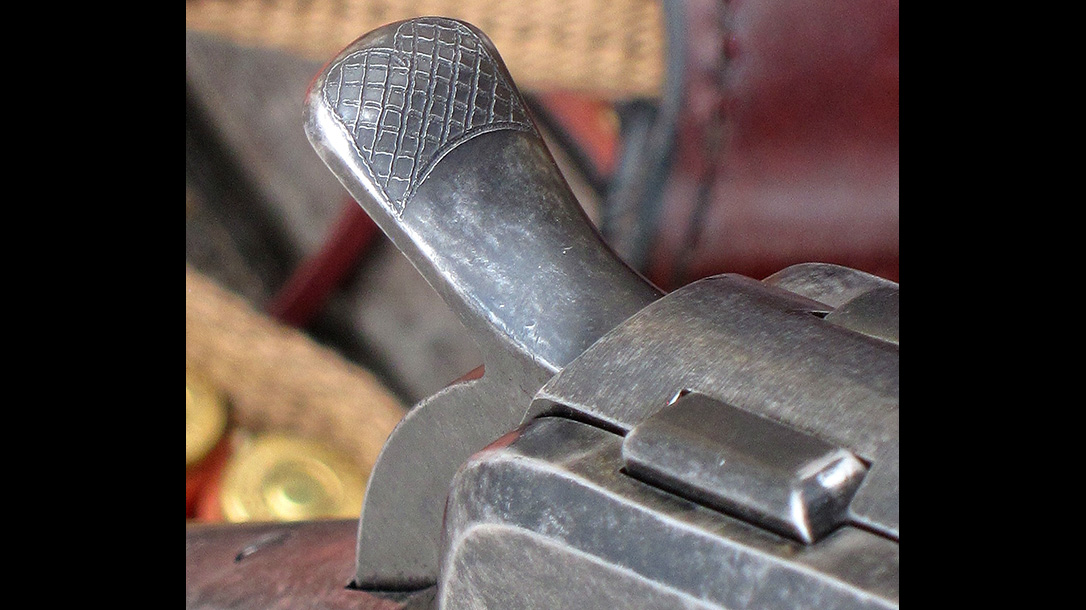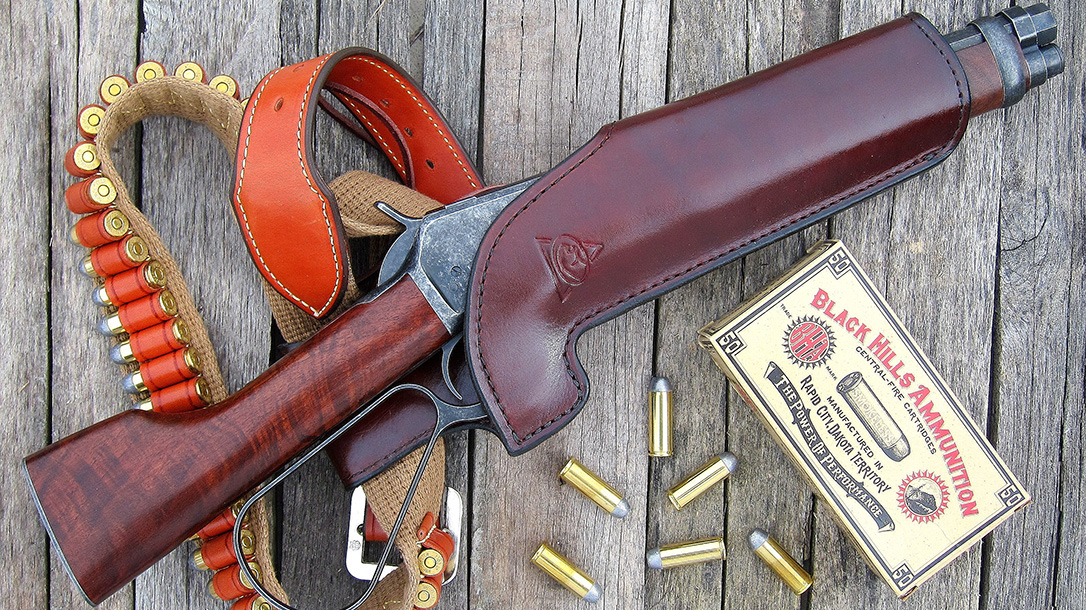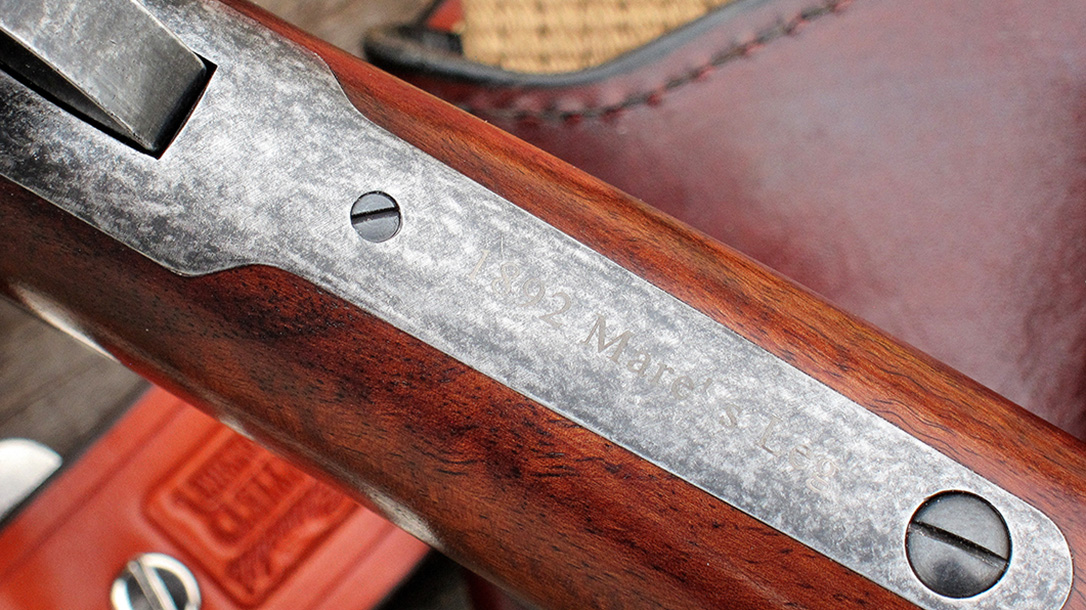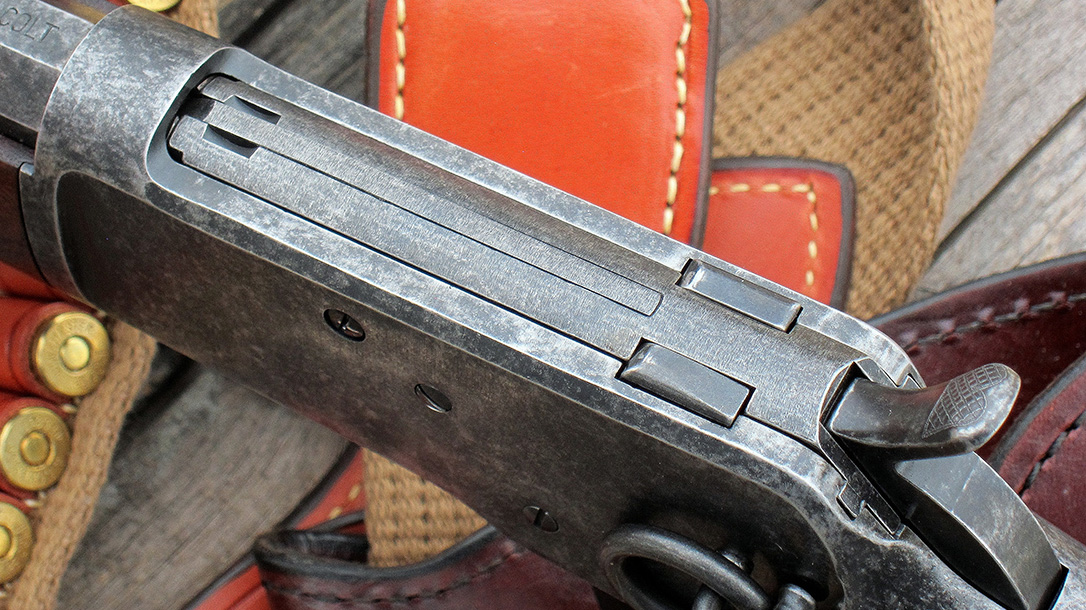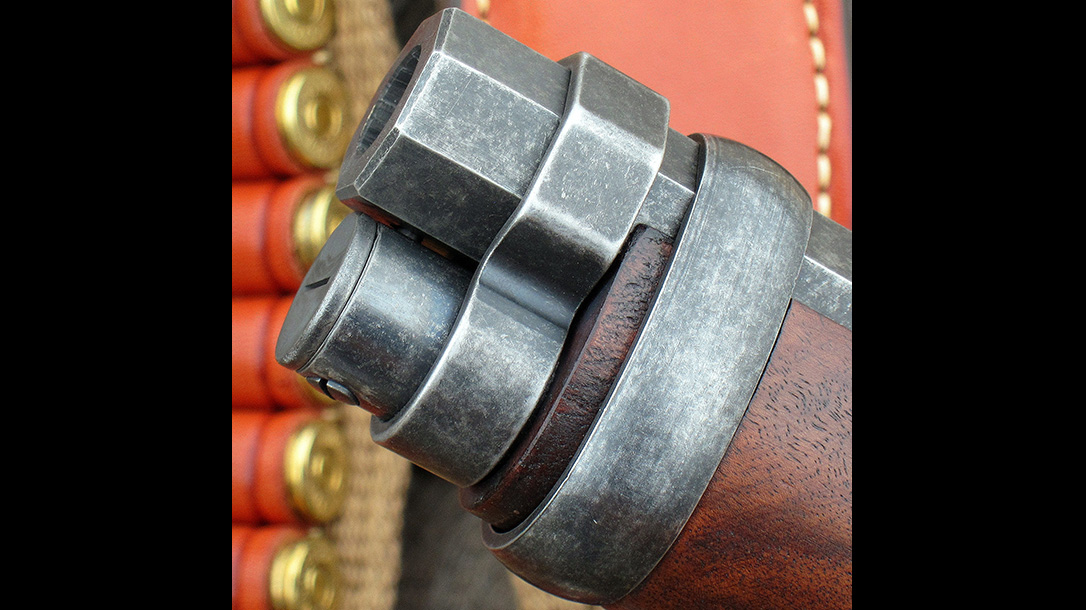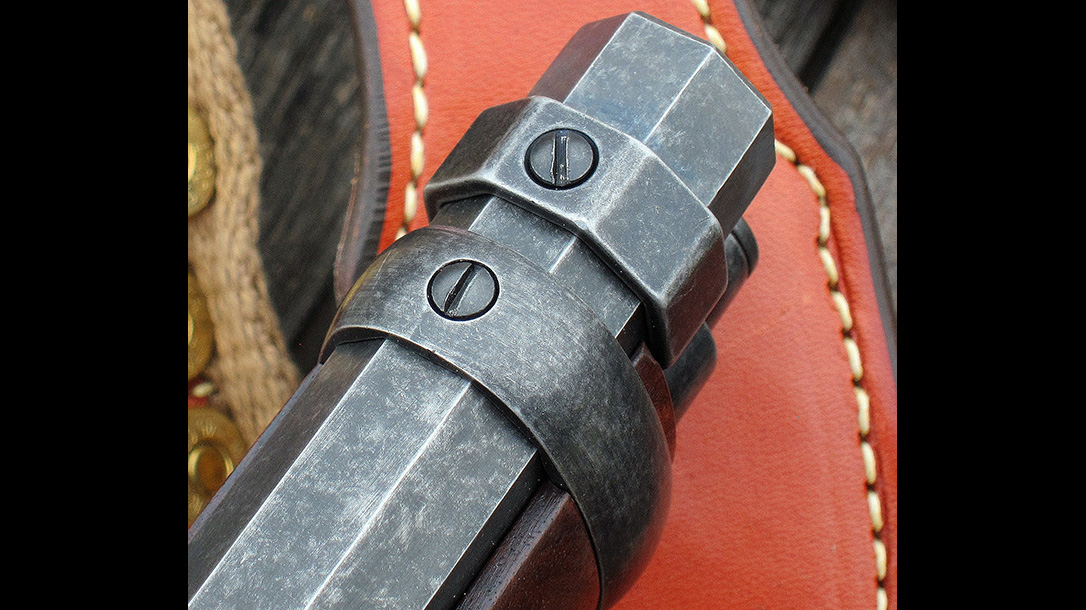The Mare’s Leg concept is far from new, so I won’t repeat the much-told story of Josh Randall, the lone bounty hunter who rode the back trails of the frontier in search of sidewinders, desperados and other nefarious riffraff that managed to get themselves “Wanted: Dead or Alive.” Randall’s iconic cut-down Winchester Model 92, carried in a custom skeletonized holster, was the hook the producers hung the show on; Steve McQueen was just the sidekick hired to run the gun for many of us who watched that Winches-ter’s adventures each week on black-and-white TV screens.
While the show died in 1961, the Mare’s Leg concept never did, and here we are 57 years later revisiting the idea. Being the biggest fan in my entire town (I checked), I’m always happy to try out another one. Chiappa’s Mare’s Leg Third Version has bee ably covered before, but I thought it deserved another look from a different angle.
Advertisement — Continue Reading Below
The Mare’s Leg originally started out with a very oversized loop lever and a round barrel. The next version used a smaller teardrop-shaped lever that was easier to manipulate in action scenes, and a third gun with an octagon barrel was used in promotional photos but never on-screen in any episode. The transition to the smaller lever makes sense; imagine your hand bouncing around in all that territory while trying to run the gun like a pro in front of the camera. In fact, in several episodes, the original large lever flops around like a flounder in that long open holster while Steve McQueen walks, and even more so during action scenes.
Among a very small handful of current makers offering modern reproductions, Chiappa has a passable pedigree with Mare’s Legs. Ten years ago, when the company had a partnership with Legacy Sports, it introduced its first Mare’s Leg as the Puma Bounty Hunter, and I still have the .44-40 test sample I wrote up for that model. It was a very well-built entry despite being overly long with a 12-inch barrel and more of a grip at the back end than the TV guns ever had. It also had sights, which the prop guns didn’t. Josh Randall was so good with his sightless Winchester that he could pull off 100-yard shots on demand, and did most of his shooting from the hip anyway. Sights weren’t needed on set; his blanks only missed when the script called for them to miss.
The Third Version
This Mare’s Leg differs quite a bit from Chiappa’s first offering, and the company’s done a nice job with it. To begin with, it’s several inches shorter at both ends, as it should be. The original TV gun’s compact dimensions were actually quite handy. Modern 12-inch barrels and long stock nubs make those guns much less trim in the hand, not to mention much heavier, and I think they detract from the package. The Mare’s Leg wasn’t a short rifle, and it shouldn’t be set up as one, especially if you intend to carry one holstered. And yes, people do.
Advertisement — Continue Reading Below
The teardrop lever retained from the second TV version is a fairly practical Hollywood affectation that makes the third model here look different. It still allows it to be spun like McQueen did in one scene and can also be cycled quickly much more easily than the first large-loop version. Another aspect of the teardrop is that it works well with gloved hands.
Chiappa’s decision to stick to the correct 9-inch octagonal barrel, instead of another 12-incher, makes the gun much more authentic to the version McQueen used for promotional purposes and noticeably easier to manipulate in general. In conjunction with that barrel shape, the company’s done a unique front-end configuration with an octagonal front barrel band just ahead of the standard oval band. The front band connects the magazine tube to the barrel while the rear band locks the wooden forend to the barrel. Also unique, instead of going with the traditional horizontal band screws used everywhere else for well over 150 years, Chiappa has moved them up to the top of both bands, tapping them directly into the thicker octagon barrel walls. More on those screws later.
Quality Details
While not a particularly useful skill in everyday life, McQueen was known to fan his ’92 on occasion, and you can do the same here with the modified “fanning” hammer. The spur’s duckbill width and altered angle are designed for off-hand engagement on a rapid palm sweep, and it works quite well. There’s a traditional saddle ring on the left side so you can hang it on the hook at the top of your favorite reproduction McQueen holster if you want full authenticity.
Advertisement — Continue Reading Below
The fit and finish on the gun are extremely well done, with the oil-finished walnut perfectly inletted around both tangs while the forend was just a shade proud of the frame. Up front, the wood and both bands mate very well, and this Mare’s Leg was built from the get-go without sights, so there’s no dovetail anywhere to be plugged. The finish on the exterior metal parts, including the saddle ring, is what Chiappa calls “Antique.” You might know it as “stonewashed.”
The exact process appears to be a trade secret, but it’s neither worn bluing nor naturally aged gray steel oxidation. If you’re expecting a gun that looks like it’s 100 years old, that’s not exactly what you’ll get, but the overall look of the finish is a mottled gray that’s attractive, and it should be more durable than bluing in staying the way it looks new for a long, long time. It’ll easily hide the wear acquired from long hours in the saddle or on the way to the range on Saturday afternoons.
Range Test
The Mare’s Leg is obviously a Hollywood fantasy gun. Everybody knows it’s slow, ungainly, heavy, takes two hands to run and can’t hit anything more than a few feet away. Even the 12-inch-barreled versions with longer stock nubs and sights are limited enough, but what can you really expect from a chopped-off lever gun that’s only 21 inches long without sights?
Advertisement — Continue Reading Below
Granted, it’ll never replace your best deer rifle, but here’s where it’s time to get back to those barrel band screws, and where you may be mildly surprised. On a customized Mare’s Leg project a while back, also without sights, I found I could easily hit a man-sized target out to 35 yards by simply aligning the top curve of the front band with the top curve of the receiver bridge as reference points. It turns out that this newest Chiappa does even better in this regard. The rear band screw head sits just high enough to be a reference point (think short shotgun bead) that can be aligned with the long extractor in the top of the bolt—if you’re in good light, you’ve got good vision, you get the gun angled correctly and can hold your mouth just right. No, it ain’t fast, but it can be accurate.
First Shots
Everybody who’s ever reviewed a Mare’s Leg has tested it from the usual hip- and eye-level positions, because there’s a law and it’s required, and I did too, but let’s look at what the gun can do in a serious setting first. I took the Chiappa to an indoor range with five different loads to give it a good workout for functioning and accuracy off a rest, and the gun did me proud on both counts.
To establish an idea of how well the gun might group farther out, I started at 10 yards and found that it could easily manage 1.5-inch groups or less with each load tested. Right off the bat, the gun shot to the point of aim (POA). Moving the targets out to 25 yards, the groups opened up and rose roughly 3 inches above my POA but were still tighter than expected. A chopped lever gun without sights should probably not produce a 2.5-inch group that far out, but with the Black Hills ammunition, this one did.
Advertisement — Continue Reading Below
Holster
Next, I took the Mare’s Leg out to an old quarry for a more practical evaluation. I’ve used holsters like the kind McQueen used, and while they’re interesting, they belong in Hollywood. The Mernickle Companion holster used here is a design that actually holds the gun securely, and it’s a much better choice if you decide you want to wear the Mare’s Leg around town. Pricing varies on this custom holster, and you can get a matching belt with it if you choose. If you order, specify that you want it for a 9-inch-barreled model without sights. I used a John Bianchi Frontier Gunleather Wells Fargo web cartridge belt to keep the weight down with a gun that’s 4.8 pounds unloaded, not counting 36 rounds of .45 Colt ammo between the belt and pistol.
This holster isn’t built for speed, and it’s impossible to get the Mare’s Leg out in a hurry unless you wear it down around your knees, so there were no speed runs out of the leather. Firing from the hip is very doable at 7 yards with practice, and you can make farther shots by holding the gun like a rifle. The first position is faster but severely limited in range; the second is very unstable, as your arms wander all over the place.
Handgun Shooting
The real way to pull longer distances out of this snub lever gun is to quit trying to shoot it like a rifle at eye level and treat it like a handgun. Putting both hands together on the gun’s wrist eliminates most of the wobble and lets you get a much steadier “sight picture” by lining up the extractor and the barrel band screw as your sights. I could easily knock down my small steel Action Target buffalo silhouette at 35 yards off-hand, and I could have taken the Mare’s Leg farther, but the sun was getting low and I was losing light.
Advertisement — Continue Reading Below
Fanning? Also doable at short distances, but only for fun. It’s no faster in getting a shot off out of leather than it is just thumb-cocking on the way up, and it’s only good for the first shot anyway, assuming you’d carry the gun with a round chambered and the hammer on half-cock, as I would. Spin-cocking? Nope. The gun requires modification to keep it from just dumping rounds in a nice pile on the ground at your feet. Finally, the recoil was light in every position with all of the ammo.
Trail’s End
Overall, of all the Mare’s Legs I’ve worked with, this one definitely gets the most style points. The octagonal barrel and smaller lever are strong selling points, the gun can be used with anything from “cowboy” rounds to jacketed hollow points without a hitch, and Chiappa’s workmanship here is first class. The action is a shade tight, but it’ll wear in; the trigger pull is a hair over 4.5 pounds with no take-up and slight travel before breaking; the wood is a step up; there were no malfunctions; there are no extraneous safeties to ruin John Browning’s design; it’s almost as short as it should be; and while it wouldn’t make my top ten list of six-shooters for defense or hunting, it can shoot quite well when needed. In the meantime, it looks great and it’s fun to shoot, which is probably enough justification to buy one right there.
Advertisement — Continue Reading Below
Chiappa 1892 Mare’s Leg Third Version Specs
| Caliber: .45 Colt |
| Barrel: 9 inches |
| OA Length: 21 inches |
| Weight: 4.8 pounds (empty) |
| Grip: Walnut |
| Sights: None |
| Action: Lever |
| Finish: Antique |
| Capacity: 5+1 |
| MSRP: $1,479 |
Chiappa 1892 Mare’s Leg Third Version Performance
| Load | Accuracy |
|---|---|
| Black Hills 250 RNFP | 1.50 (10 yards), 2.50 (25 yards) |
| Federal 225 Champion SWCHP | 0.69 (10 yards), 3.56 (25 yards) |
| Remington 225 Target LSWC | 1.25 (10 yards), 4.38 (25 yards) |
| Winchester 255 LRN | 1.25 (10 yards), 6.25 (25 yards) |
| Winchester 255 Silvertip JHP | 0.75 (10 yards), 4.19 (25 yards) |
*Bullet weight measured in grains and accuracy in inches for best five-shot groups.
For more information, visit chiappafirearms.com.
This article was originally published in “Guns of the Old West” summer 2018. To order a copy and subscribe, visit outdoorgroupstore.com.
Advertisement — Continue Reading Below
